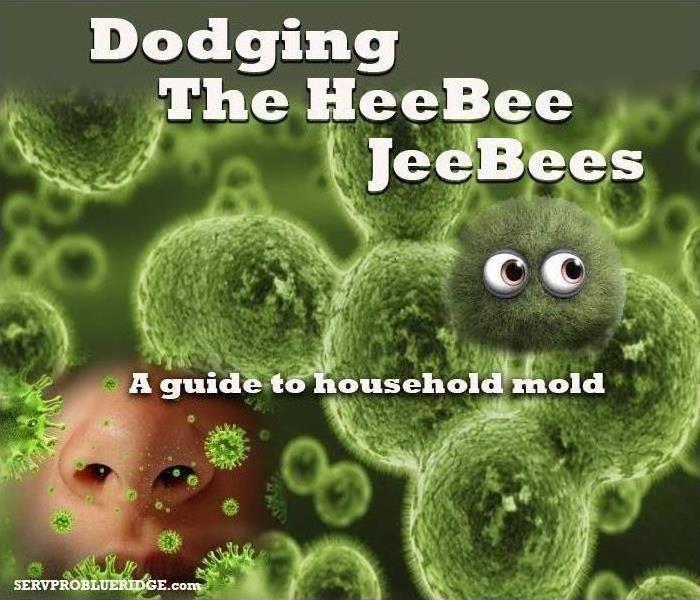Don't take a chance on getting the Heebee Jeebees!
9/11/2019 (Permalink)
Household mold is fungi and is commonly referred to as mildew. You know the stuff, mostly ... you know the smell. Childhood visits to lakeside cabins, 1970s ranch home basements and even your grandma's house might bring back the memory of your mom saying "shew, it smells musty in here." Musty, is, in all actuality a word. Your mom didn't make it up. See, fungi used to be classified as plants, for years, until some scientist discovered that it acts more like an animal. So, fungi got their very own kingdom. Ah, a kingdom … "my kingdom for a horse" said Shakespeare. Seemingly simple (like the illustration from the Bard), fungi actually appears in many forms, the quickest to come to mind is usually, a mushroom. Additionally, fungi can appear as a plant parasite and damage crops. The type of fungi we are talking about today is the type which produces household, “mildewly” and musty ol mold. That culprit, though common, is actually a diverse group of organisms.
All fungi are made up of tiny filaments called hyphae. Isn't that interes … zzzzzz ….
The hard walls of fungus (mold) are built out of chitin, the same material that insects and arthropods have as a hard outer shell. Ok, so that's kinda cool. That totally makes the "like animals" part make more sense. Mold reproduces via microscopic particles called spores. It's largely understood that spores are irritants and can cause health effects. The fungi in the outdoors is part of the highly complex process of decomposition, you know … how fallen trees rot and stuff. Organisms such as ants will actually transport bits of fungus to their food supply (usually leaves or plants) to aid in the breakdown. Ants cannot digest cellulose. So, they use fungi kinda like we use meat tenderizer.
Mold lives by breaking down organic material and it spreads in a largely invisible web. The type of fungi that produces household mold and woodland mushrooms do differ, however; in the way that mushrooms emerge as visible evidence of fungi, so does dusty, fuzzy looking household mold.
The common denominator in the growth of all mold, is moisture. All this talk of fungi, mold, mildewy smells, invisible webs … it's creepy, huh? That's why, here at SERVPRO, we recommend you never try to take care of mold issues in your house by yourself. If you can see it, there is usually so much you can't see … we don't want you to even think about it.
We offer complete mold remediation services so you don't even have to! See, now that you understand how mold works … you'll also understand that a spray bottle of bleach and some rubber gloves are only going to worsen the bigger issue. If there is mold showing on the wall, the carpet … that invisible web we talked about ... is strewn far and wide. You can't be thinking about that! You'll get the heebee jeebees! No one wants the heebee jeebees! Not to mention, if you start trying to eradicate the visible stuff and you manage to get a little of the not so visible stuff, you'll stir up the spores! So, please if you see or suspect mold in your home, or Grandma's home … give us a call!






 24/7 Emergency Service
24/7 Emergency Service
